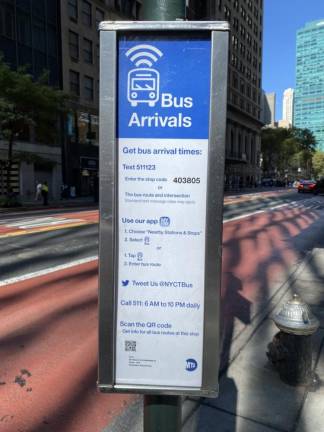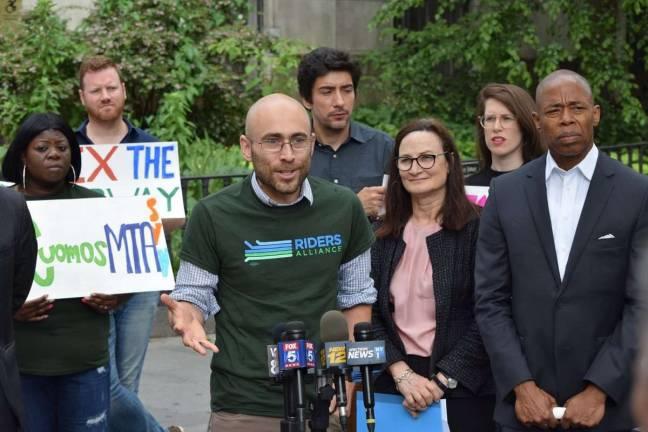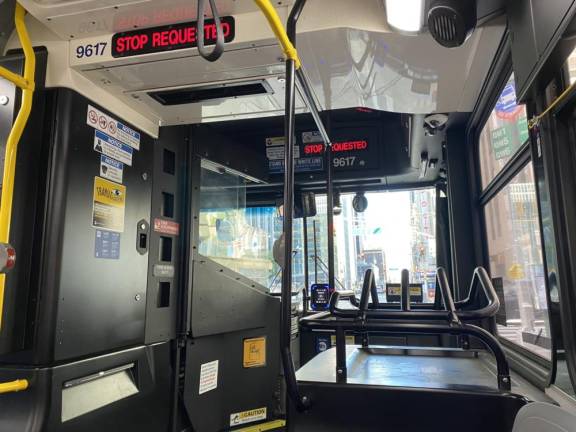Cheap and Chic: I Was a Bus Snob Until I Wasn’t
An expensive trip, a transit pro interview, and some suggested tools for the ride



On a humid Lower East Side July afternoon my gussied-up friends and I needed to get uptown. The thought of climbing down into the subway cauldron seemed unamusing. I offered to call an Uber. Forty plus dollars later my generous heart felt a bit chilled. That’s when I decided to get schooled on our above ground transit and start using the bus system instead.
Buses By the Numbers
Our city carries more passengers than the next three largest bus systems combined. In 2019 our annual ridership was 678 million. About 5,900 bus travel 138 miles on 325 routes with 16,350 stops. Each bus has 7,000 parts that can potentially retire or expire in our screech and honk traffic.
During COVID, bus commuting gained popularity. The decreased traffic made for a faster, cleaner, and for a while, free trip.
The bus went from dated and dowdy to cheap and chic in a New York Epidemic Minute.
Now traffic is normalized, fares have returned, yet ridership is relatively higher, putting pressure on the MTA to continue to improve the system.
While buses still lag behind trains and subways for pre-pandemic ridership, their numbers continue to rise as employees head back to work in the the office.
Subway Elevators Don’t Exist or Are Out of Service
This August the Americans with Disabilities Act won their lawsuit against the MTA because the city failed to maintain and extend the subway station elevators, a violation of the ADA.
I spoke with Danny Pearlstein, Policy and Communications Director of Riders Alliance. They “fight for better transit by organizing subway and bus riders.”
“Well over half a million potential riders cannot take the subway because of mobility issues,” Pearlstein said.
Beyond those with mobility issues there are riders with strollers, shopping carts or large suitcases. They are unable to use many stops, or find themselves stuck at a station with an elevator that is suddenly out of service. Only a quarter of the subway’s 472 stations provide stair-free access. Often riders arrive at a station to find the elevator unusable.
“Today, we affirmed our commitment to all riders across the transit system by announcing a legal agreement to achieve accessibility at 95% of stations with work in development by 2055,” tweeted the MTA.
We can’t hold our breath for 30+ years, so in the meantime we can take the bus.
The Bus Has Less Reported Crime Than the Subway
A one-month snapshot of reported complaints from the NYPD, in April 2022 : 85% were on the subway; 15% on buses. Kathy Wylde, President, Partnership for New York City whose members represent global business leaders and major employers recently said, “We can’t in conscience bring our people back to work, encourage them to ride the subways unless we see tangible evidence that you’re doing something about [the crime on subways].”
According to the Metropolitan Transportation Authority, in 2022 the number of complaints like assaults and harassment in the transit system is almost identical to the one in 2019, though subway ridership is way down from what it was three years ago. At this moment, the bus is a safer bet.
The Bus is More Reliable
The MTA statistics show a higher performance rating than the subway system for the “ability to deliver the scheduled service.”
Plus, you’re more likely to get a seat on a bus than on the subway.
Apps and Maps
MTA Bus Time: When you text a bus stop code or intersection to 511-123 on your cellphone you’ll receive a text back stating how many stops away (and approximate minutes) the next bus is. You have the option to then type in ‘R’ to refresh to get an update on the ETA.
NaviLens lets blind, low-vision bus riders and others use their phones to find bus stops and learn arrival times. The app translates visual signage into audio and can detect large colored QR-style codes on the bus stop pole from up to 40 feet away and at an angle of up to 160 degrees. It helps customers determine the accurate location and distance to the nearest bus stop, find out when the next bus is arrive, and how crowded the bus is. Currently this is in pilot mode and only on one line, the M23 SBS bus route.
myMTA is the more comprehensive app with trip planning, service change info, schedules, nearby stations and stops, live tracking of bus locations, how many stops away your bus is, and you can create favorites as well as receive personalized text and email alerts. It also tells you how crowded a bus is.
MTA Bus map: Apps can fail. Having no service in a tunnel won’t help you, and sometimes a map gives you a better picture of where you are and where you need to be. Download the MTA bus map onto your phone. https://new.mta.info/document/1203, and the subway map https://new.mta.info/map/5256. You always need to at least look like you know where you’re going: you know the drill.
What’s Next
Pearlstein outlined several key improvements that bus riders need:
· “The city needs more bus lanes, and camera enforcement.” The MTA called for 60 miles of new bus lanes, but so far the DOT has only delivered about 20 miles.
· “Also, the Traffic Signal Priority (TSP) system needs to be implemented.” TSP allows the bus to communicate with the traffic signal to adjust the signal timing in its favor by extending the green signal or shortening the red signal at the approaching intersection. “This helps with emission and reduced time lags,” he explained.
· “The MTA also needs to be all All Boarding (front and back entrance). They’ve had the technology but haven’t implemented it because of fear of fare evasion.” There are a ways to track and manage this evasion, evidently. The subway system still struggles with that problem.
· “The MTA needs to (and is in the process of) redesigning the bus network, which in part dates back from the 19th-century trolley line. Major employers, like the airport and huge hospitals and universities didn’t exist. Redesigning the network to maximize access to the majority or riders and increase efficiency is needed.” The MTA now says it the redesign of the bus networks (many dating back to the 19th century trolley lines – oh yes!) is going to take five years longer than planned, because of COVID. (If people are allegedly working so well remotely vs. being in the office, why is this being extended five years?) This will be done borough by borough.
I know some young hipsters who commute out of the boroughs into Manhattan, and they’re taking the bus when they can, truthfully, because of the subway crime. Real or perceived, it’s angsty down there. I used to think the bus was too slow: frankly it is still too slow, but if you have the time, and if some of the congestion easy strategies are implemented, the bus may become the coolest ride in the city.